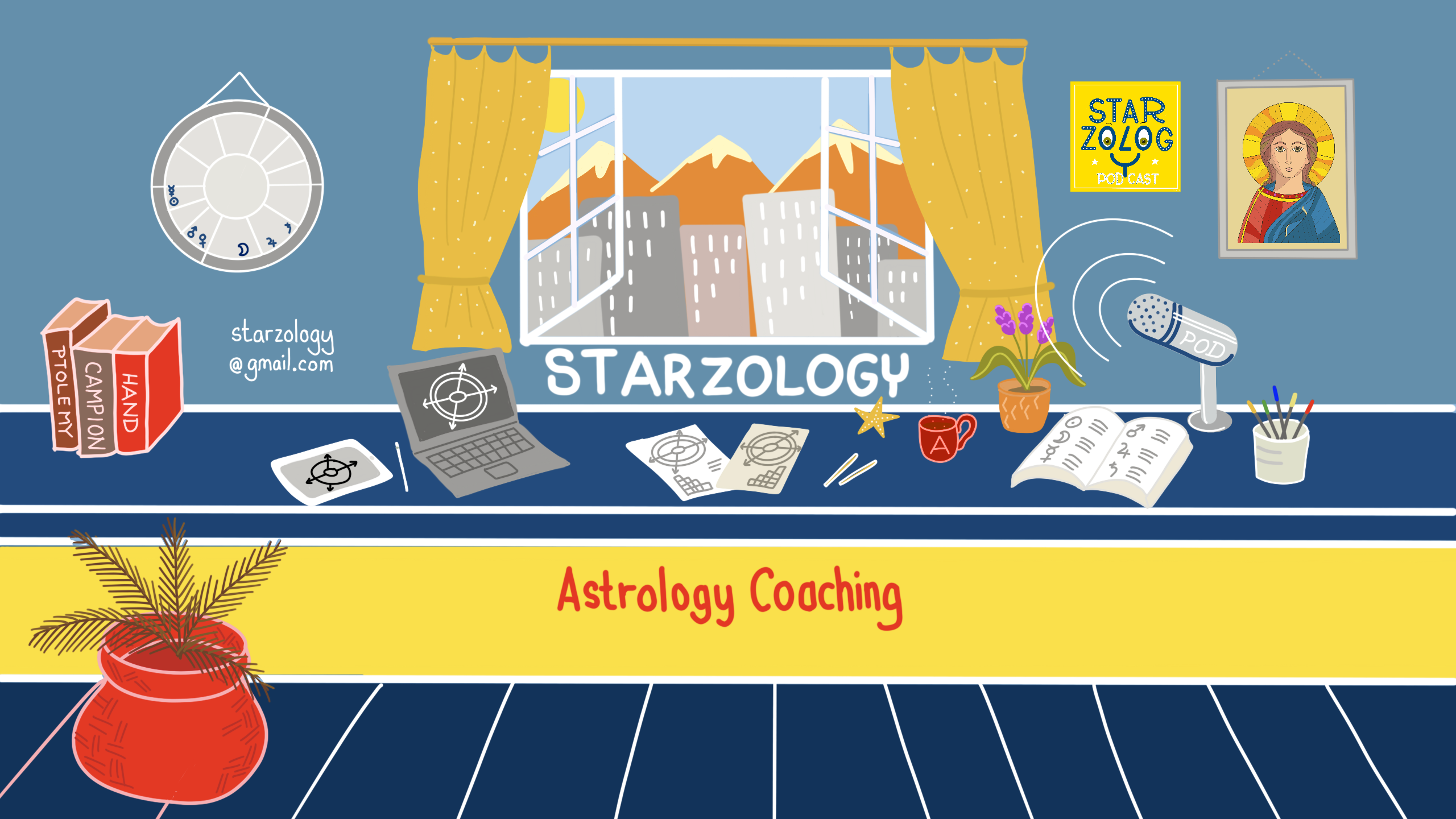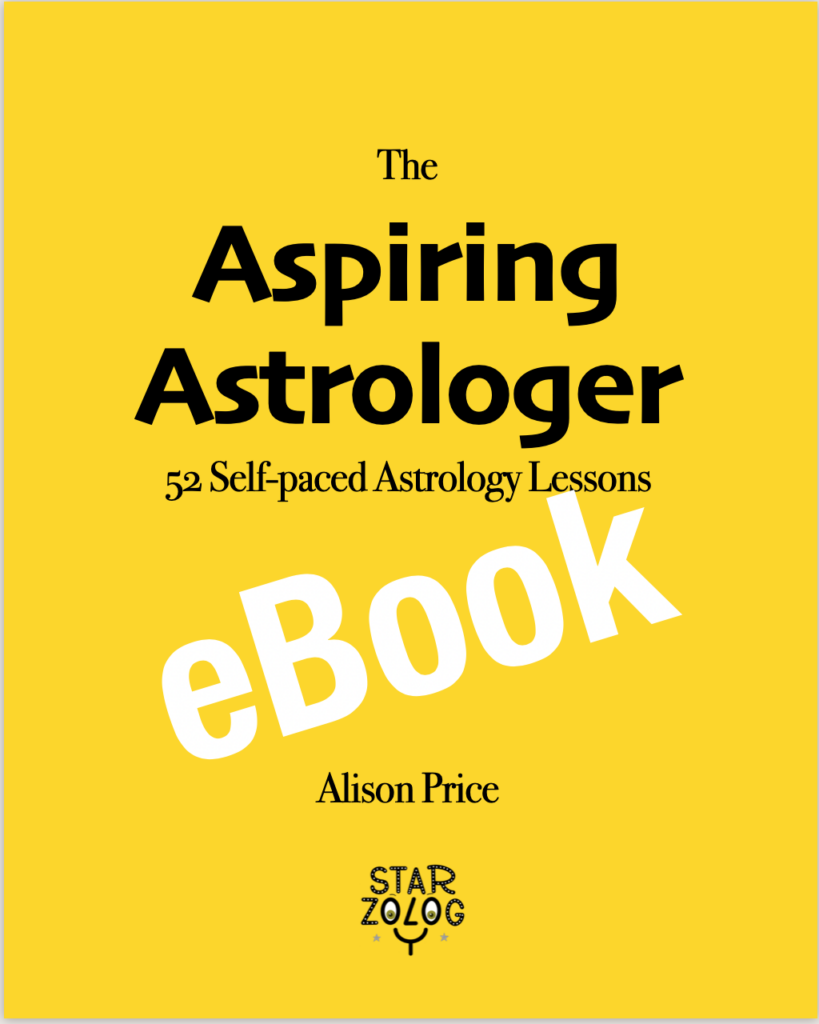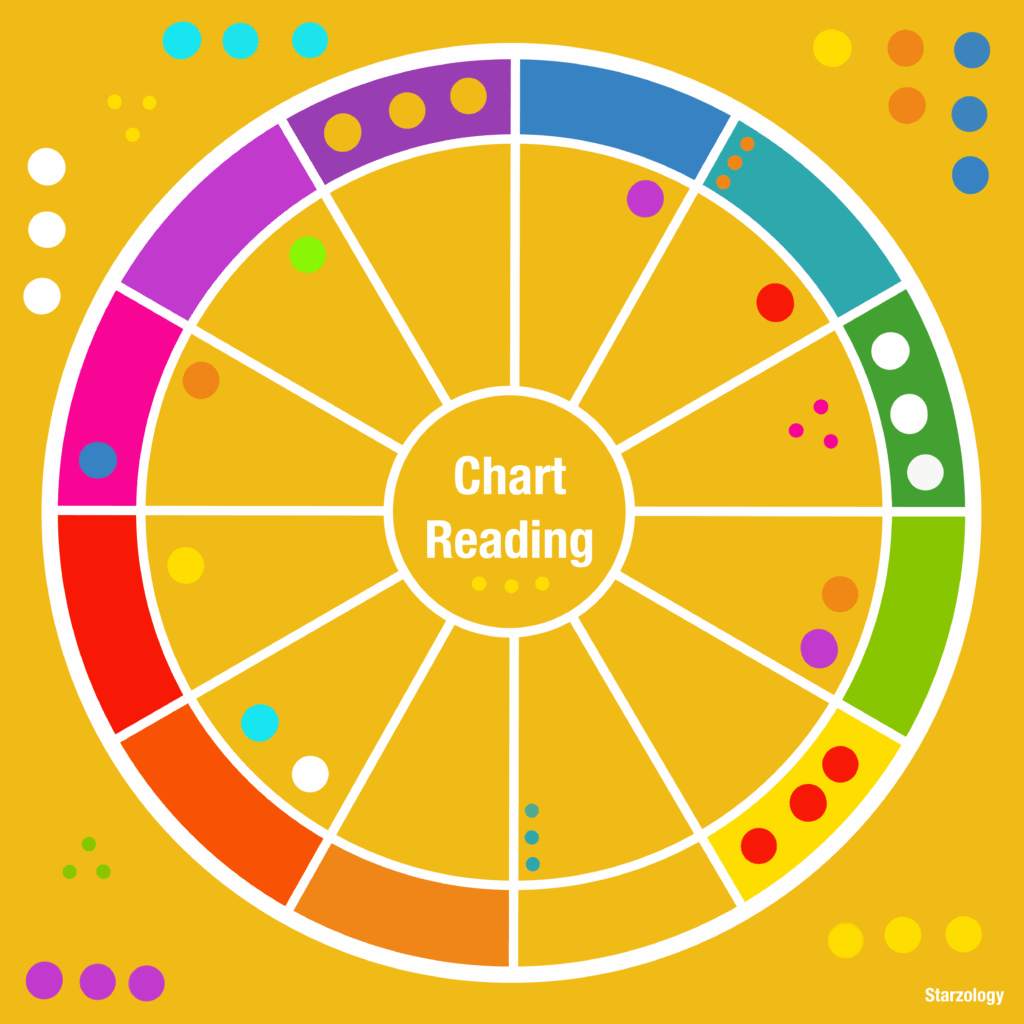Author: Alison Price – Published: October 2023 – Revised: January 2024
Chart Interpretation Example
See how to get organized to start a CHART INTERPRETATION. You can listen to the interpretation in the podcast episode below or read on for all the main margin notes that I extracted to read this birth chart. I’d like to thank Bo for giving us permission to use his birth chart for this training. We appreciate you.
Podcast Episodes
Bo’s Natal Chart Interpretation
In the first podcast episode, Alison and Arwynne go through a new chart interpretation step by step and extract the most important planets and signifiers. This is the way professional astrologers begin their chart readings.
Listen now >>> Bo’s Natal Chart Interpretation Prep
The Duality of Pisces
In the second podcast episode Arwynne welcomes Bo. This is a wide-ranging discussion on the most complex and hard-to-define sign of all. Pisces might also might be the most misunderstood and maligned sign in the zodiac. This episode is an illuminating deep dive for anyone struggling to pin down what the deepest of the water signs is all about. We explore the complexities, contradictions, dreams, intuitions, addictions, ambitions and sacrifices that make this sign so unique, and why we would all benefit from understanding the oceanic energies of Pisces a little better.
Chart Details
Bo’s natal chart details as given are as follows:
- 9:32 am, January 22nd, 1988, Ness City, Kansas, USA.
This birth data is rated “AA” on the Rodden Rating as the time (9:32 am) is recorded on his actual birth certificate in hand.
Chart Calculation Defaults
We are using standard Western astrological defaults including:
- The Tropical zodiac.
- The Placidus house system.
- The True Node.
This chart is calculated with Astro Gold.
Standard Orbs
Our standard natal orbs for both applying and separating aspects are:
- 8° for conjunctions, oppositions, trines and squares.
- 4° for sextiles.
- 2° for semi-sextiles, semi-squares, sesquiquadrates and quincunxes.
- 1° for quintiles, biquintiles, parallels and contra-parallels.
Begin Gathering the Information
This is how to approach a chart interpretation using the method I’ve been using for years. The aim is to get all the relevant information onto one page to start with.

Step 1: Balances
The balances refer to the polarity, elements, modes, hemispheres, quadrants, triple divisions, signs and houses. Only count the seven visible planets.
Polarity
In this chart the active polarity has five and the passive polarity has two planets. This makes the active polarity strong. People who are strong in the Active polarity are positive and eject energy into the world by their thoughts and actions.

Element
Now let’s consider the elements. In this chart there are three planets in Fire, Earth has no planets, Air has two planets and Water has two planets. This makes Fire slightly stronger than the other elements. Technically, for an element to be strong it must have two more planets than the next best element, which fire doesn’t. It only has one more planet than the next best elements which are Air and Water. Strong fire people are inspirational and will inspire others as well.
Explore more >>> Astrological Elements
Explore more >>> The Elements and Herbs
Mode
Turning to the modes. In this chart. Cardinal has one planet fixed has two planets and Mutable has four planets. This makes the Mutable mode strong with four planets. For a mode to be strong it technically must have two more planets than the next best mode. In this case the next best mode is Fire with two planets therefore Mutable is strong. People who are strong Mutable types are amenable to change.

Hemispheres
Of the four hemispheres, the Northern hemisphere has three planets, the Southern hemisphere has four planets, the Eastern hemisphere has six planets, and the Western hemisphere has one planet. This makes the Eastern hemisphere strong with six planets. People with a strong Eastern hemisphere. Have a great focus on their lives and what they are doing.
Hemisphere Ruler
The Eastern hemisphere ruler is Jupiter (as Sagittarius is on the MC). Jupiter is in its own hemisphere (Eastern) so this make Jupiter a focus planet for us to note.
Quadrants
Considering the quadrants. The first quadrant has three planets. The second quadrant has zero planets. The third quadrant has one planet. And the 4th quadrant has three planets. Because the 1st and the 4th quadrants have equal amount of planet. There is no strength in quadrants here.

Triple Division
Moving on to the triple divisions. The first triple division has three planets. The second triple division contains zero planets, and the third triple division has four planets. This makes the third triple division slightly stronger. However, technically, for a division to be strong it needs to have two more planets than the next best triple division, which the third division doesn’t. That’s why the third division just getting the “slightly stronger” label. The third Triple division is the “Them” division, where the focus is on what’s going on in the world.

Sign Emphasis
The sign with the most planets is Sagittarius. Therefore, the sign of The Archer, Sagittarius, is emphasised.
House Emphasis
There is no house with more than two planets thus no house emphasis.
Step 2: Ascendant Complex
Ascendant Sign
The Ascendant sign is Pisces. This makes the chart ruler the greatest planet of all, Jupiter.
First House Planets
The planets in the first house are Venus in Pisces and the Moon in Pisces. We also note that the north node is in the first house in Pisces as well.
Aspects to the Ascendant
Looking at aspects to the Ascendant, and we have Venus conjoined the ascendant and Mars is square the ascendant.
Step 3: Chart Ruler Complex
Chart Ruling Planet
The chart ruler is Jupiter because Pisces is on the Ascendant and Jupiter rules Pisces.
Ruler’s Sign
Jupiter is in Aries. Note that Jupiter is in mutual reception with Mars in Sagittarius.
Ruler’s House
Jupiter is in the second house.
Ruler’s Aspects
Jupiter is conjoined the Part of Fortune and Eris. It receives sextiles from Mercury and Chiron, and trines from Saturn and Uranus. Note that Jupiter only has soft aspects and therefore is unafflicted. Very nice.

Pin this to read later
Step 4: Luminaries
The Sun
Sun’s Sign
The Sun is in Aquarius which is in detriment as it is in the sign opposite its rulership sign of Leo, so it gets a score of -5 in Essential Dignity.
Sun’s House
The Sun is in the 12th house.
Sun’s Aspects
The Sun is unaspected as it does not receive a Ptolemaic aspect from another planet. However, the Sun does receive a lesser-used aspect, the bi-quintile, from Chiron. Additionally, the Sun is trine the South Node. Even though the Sun receives two aspects, it is technically considered “Unaspected” because the Sun does not receive a Ptolemaic aspect from another planet.
Luminaries: The Moon
Moon’s Sign
The Moon is in Pisces.
Moon’s House
The Moon is in the first house. Well placed in an angular house.
Moon’s Aspects
The Moon is conjoined the North Node and trine Pluto. The Moon is quintile Neptune. The Moon’s hard aspects are squares from Saturn and Chiron. The Moon is the focal planet in the T-square. The Moon receives an opposition from the South Node. The Moon is opposition and contra-parallel the Vertex. This makes the opposition to the Vertex a double whammy opposition and is therefore a more significant aspect.
Lunar Phase
The lunar phase is Crescent.

Arwynne and Bo
Part 5: The Other Planets in Order
Venus
Venus’ Sign
Venus is in Pisces, in exaltation. Venus gets a score of +4 for it’s exalted status in Essential Dignity.
Venus’ Position
Venus is the rising planet and Venus is in the Ascendant Gauquelin sector.
Venus’ House
Venus is in the first house. Well placed in an angular house.
Venus’ Aspects
Venus is conjoined the Ascendant. Venus is square Mars. Venus is trine Pluto and sextile Neptune. Venus is quintile Saturn.
Chiron
Chiron’s Sign
Chiron is in Gemini. Chiron is the only retrograde planet in Bo’s chart.
Chiron’s House
Chiron is in the fourth house. Chiron is part of the only T-square.
Chiron’s Aspects
Chiron is trine Mercury and sextile Jupiter. Chiron is opposition Saturn and square the Moon and part of the T-square. Chiron is opposition Uranus. Chiron is biquintile the Sun.
Pluto
Pluto’s Sign
Pluto is in Scorpio, in dignity and gets a score of +5 for Essential Dignity.
Pluto’s House
Pluto is in its natural eighth house which makes it in accidental dignity. I give Pluto a score of +1 for this. Well placed.
Pluto’s Aspects
Pluto is square Mercury. Pluto is trine the Moon and Venus and sextile Neptune (generational aspect).
Mars
Mars’ Sign
Mars is in Sagittarius.
Mars’ Position
Mars is well positioned as the Most Elevated Planet. Mars is in the Midheaven Gauquelin sector.
Mars’ House
Mars is in the ninth house.
Mars’ Aspects
Mars receives a trine from Eris. Mars receives a square from Venus. Mars is quintile Mercury.
Saturn
Saturn’s Sign
Saturn is in Sagittarius.
Saturn’s House
Saturn is in the tenth house so is in accidental dignity because the 10th house is Saturn’s natural house (+1).
Saturn’s Aspects
Saturn is conjoined Uranus. Saturn is trine Jupiter and trine the Part of Fortune. Saturn is square the Moon, opposition Chiron and square the Lunar Nodes. Saturn is quintile Venus.
Uranus
Uranus’ Sign
Uranus is in Sagittarius.
Uranus’ House
Uranus is in the tenth house.
Uranus Aspects
Uranus is conjoined Saturn, trine Jupiter and trine the Part of Fortune. Uranus is opposition Chiron and square the Lunar Nodes.
Neptune
Neptune’s Sign
Neptune is in Capricorn.
Neptune’s Position
Neptune is the oriental planet.
Neptune’s House
Neptune is in the eleventh house.
Neptune’s Aspects
Neptune is sextile Venus and sextile Pluto (generational). Neptune is square Eris. Neptune receives a quintile from the Moon.
Mercury
Mercury’s Sign
Mercury is in Aquarius.
Mercury’s Position
Mercury is the occidental planet.
Mercury’s House
Mercury is in the twelfth house.
Mercury’s Aspects
Mercury is sextile Jupiter, the Part of Fortune and Eris. Mercury is trine Chiron. Mercury is square Pluto. Mercury is biquintile the South Node.
Dispositor Tree
Bo has a Mutual Reception Tree with Jupiter in Aries and Mars in Sagittarius on the top line. Also note the Saturn is a Gateway planet with three planets below it.
Explore more >>> Dispositor Trees

Part 6: Major Aspects Pattern
T-Square
There is only one Major Aspect Pattern which is a T-square. The T-square composes of Saturn in Sagittarius opposition Chiron in Gemini, and both are square the Moon in Pisces. The Moon is the focal planet of this T-square. The energy of Saturn and Chiron will be channelled and often expressed through the Moon. This is a mutable T-square as all the planets are in mutable signs. This T-square can be referred to as a “Moon mutable T-square.”
More Example Charts
Below is a selection of example charts. Thet generally show my process for getting the information together before the interpretation begins.

Podcasting and Joe Rogan’s Birth Chart
Author: Alison Price - Published: March 2025 Podcasting In our latest Starzology Astrology podcast episode, Arwynne and I look at the astrology of podcasting. We also look at the natal chart of contemporary podcaster Joe Rogan. Podcasting Planet We discuss the...

Chart Interpretation: Chani Atreides
See how to do a chart interpretation and gather info to read a birth chart with our listener’s chart. She chose the Starzname Chani Atriedes.

Taurpio
See how professional astrologers approach a chart reading. Learn how to extract a natal chart standout features.
Author Bio
Alison Price: Astrology Coach
Alison wants to help you uncover your individual creativity and lead a fulfilling life using your own astrology. She shares her wisdom from the heart with a touch of humor.
Learn more about Alison’s journey.
If you’d like to get in touch with Alison, you can reach out to her via email at starzology@gmail.com.
More Articles
If you enjoyed this post, you may like some more astrology related articles from our blog.

Donald Trump: Birth Chart
Donald Trump’s birth chart (Leo rising, Sun Gemini and Moon Sagittarius) is interpreted for the USA 2024 Election.

6th House Planets
In astrology, planets in the 6th HOUSE suggest how you work, your daily habits and how your health is generally.

This Month’s Horoscope Overview
The Starzology monthly horoscope overview provides all the ingresses, stations and lunations for each month with a short interpretation.

9th House
In astrology, the 9th HOUSE suggests your general knowledge, religion, travel, philosophy and what you publish.






